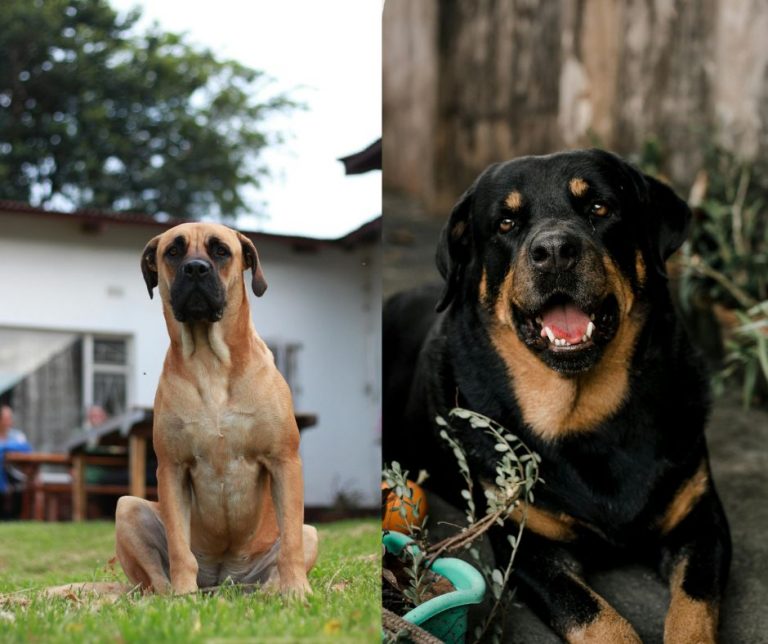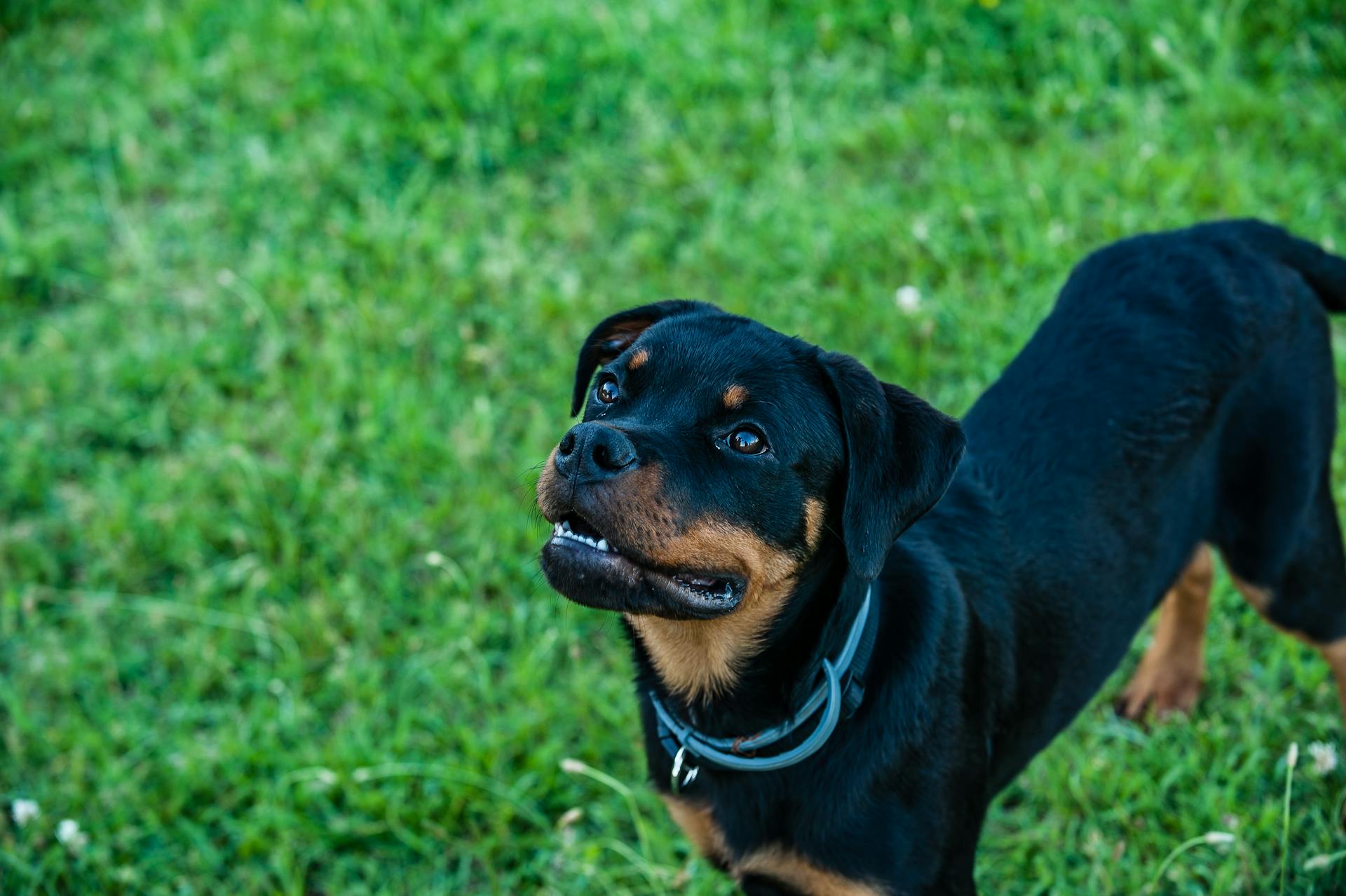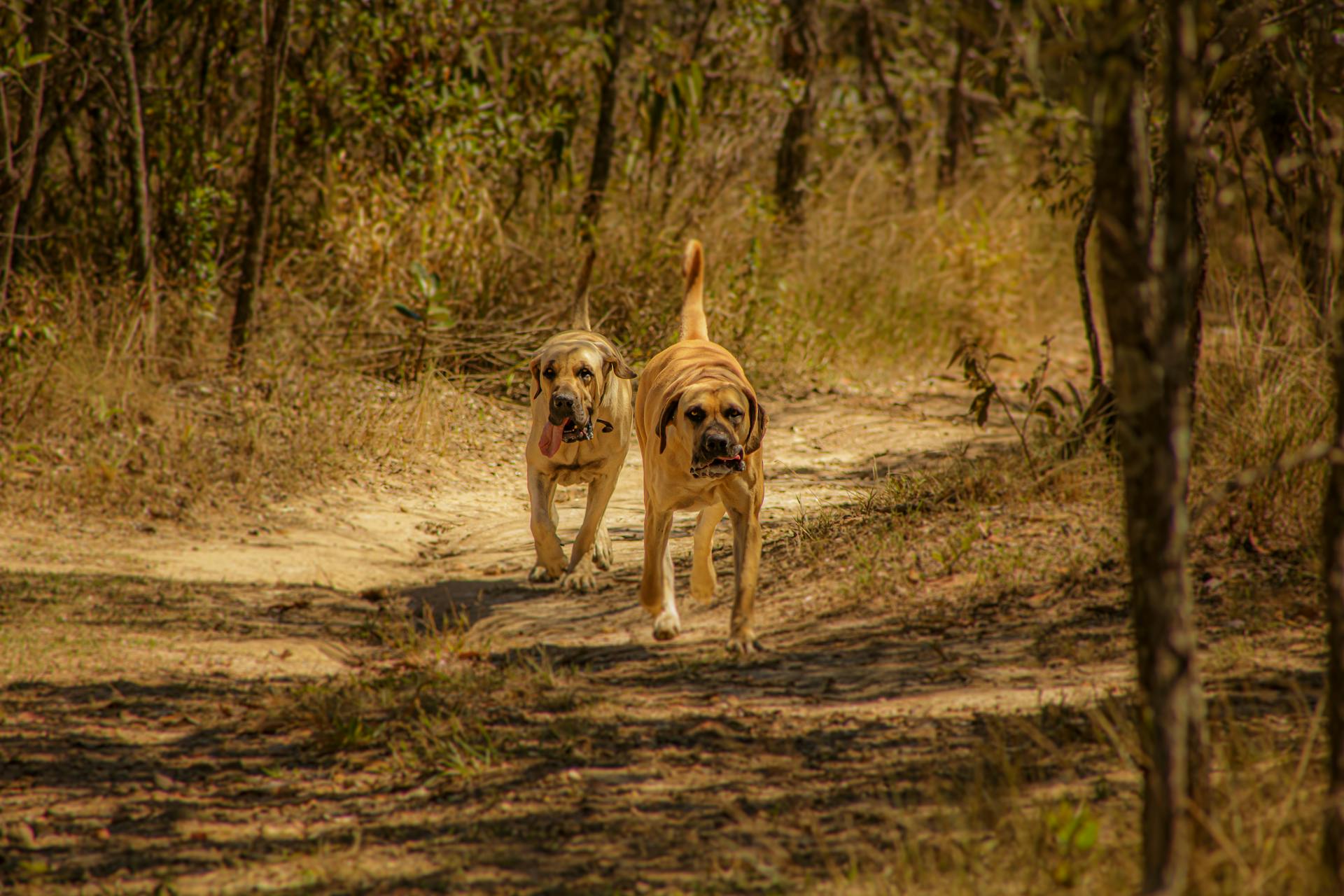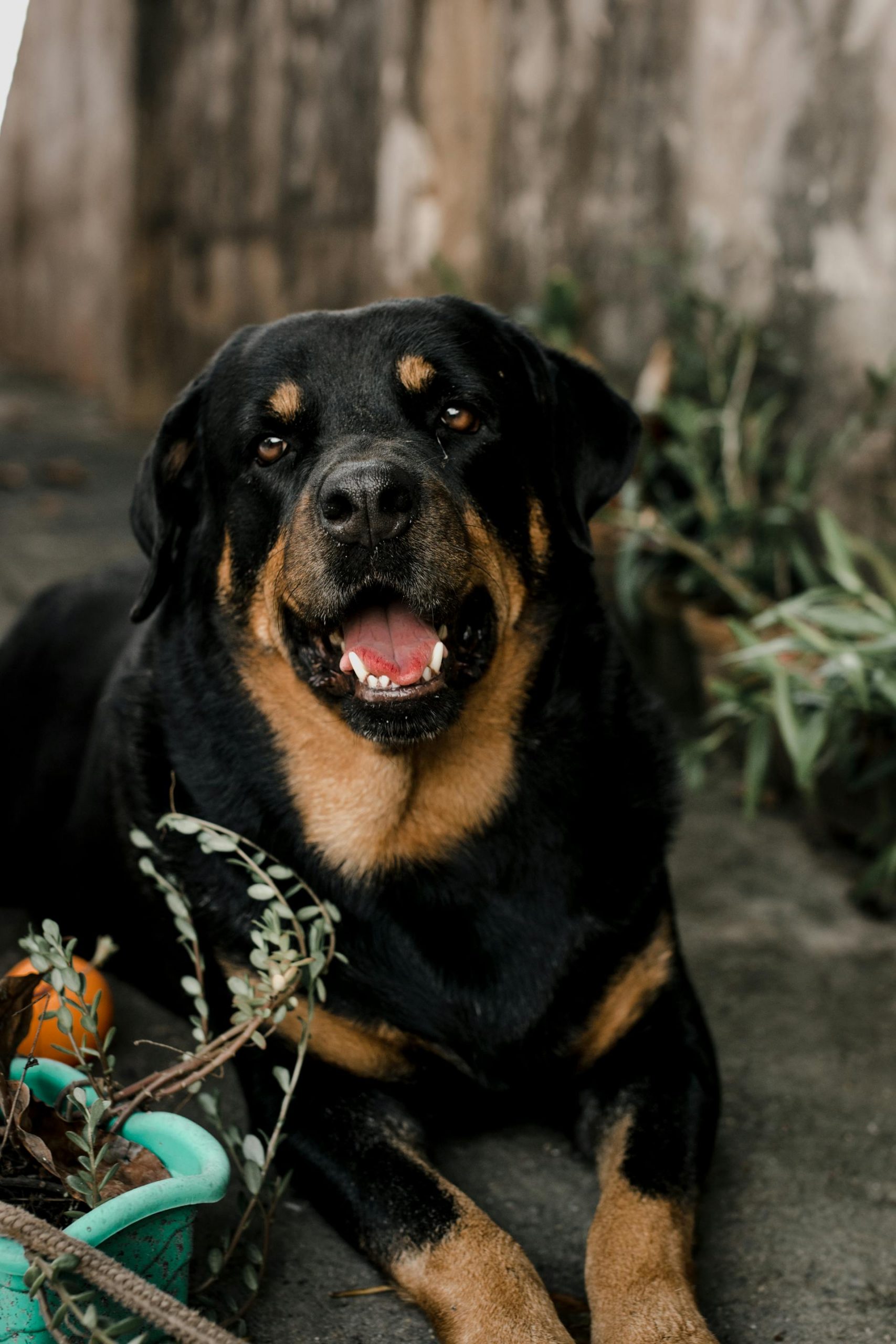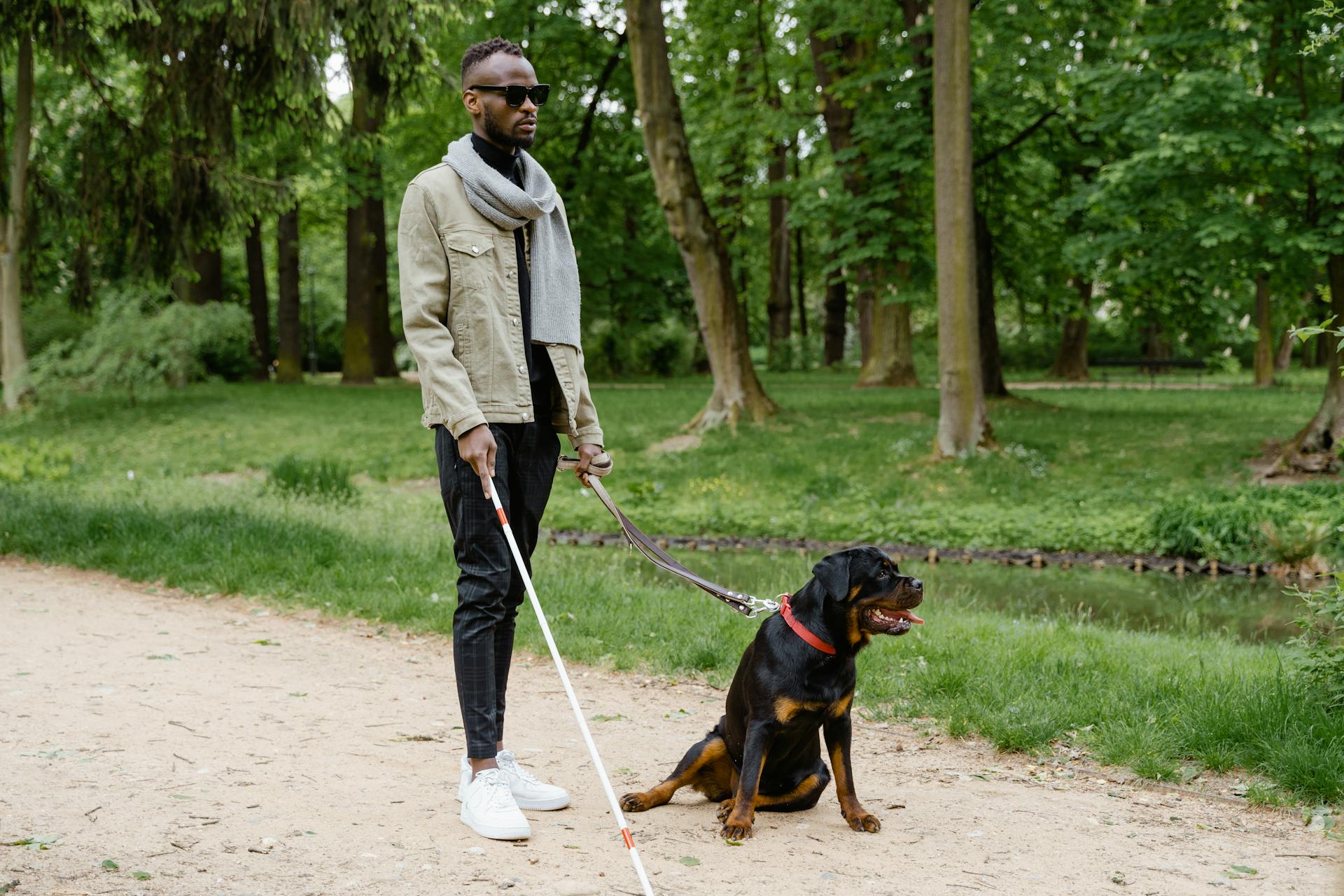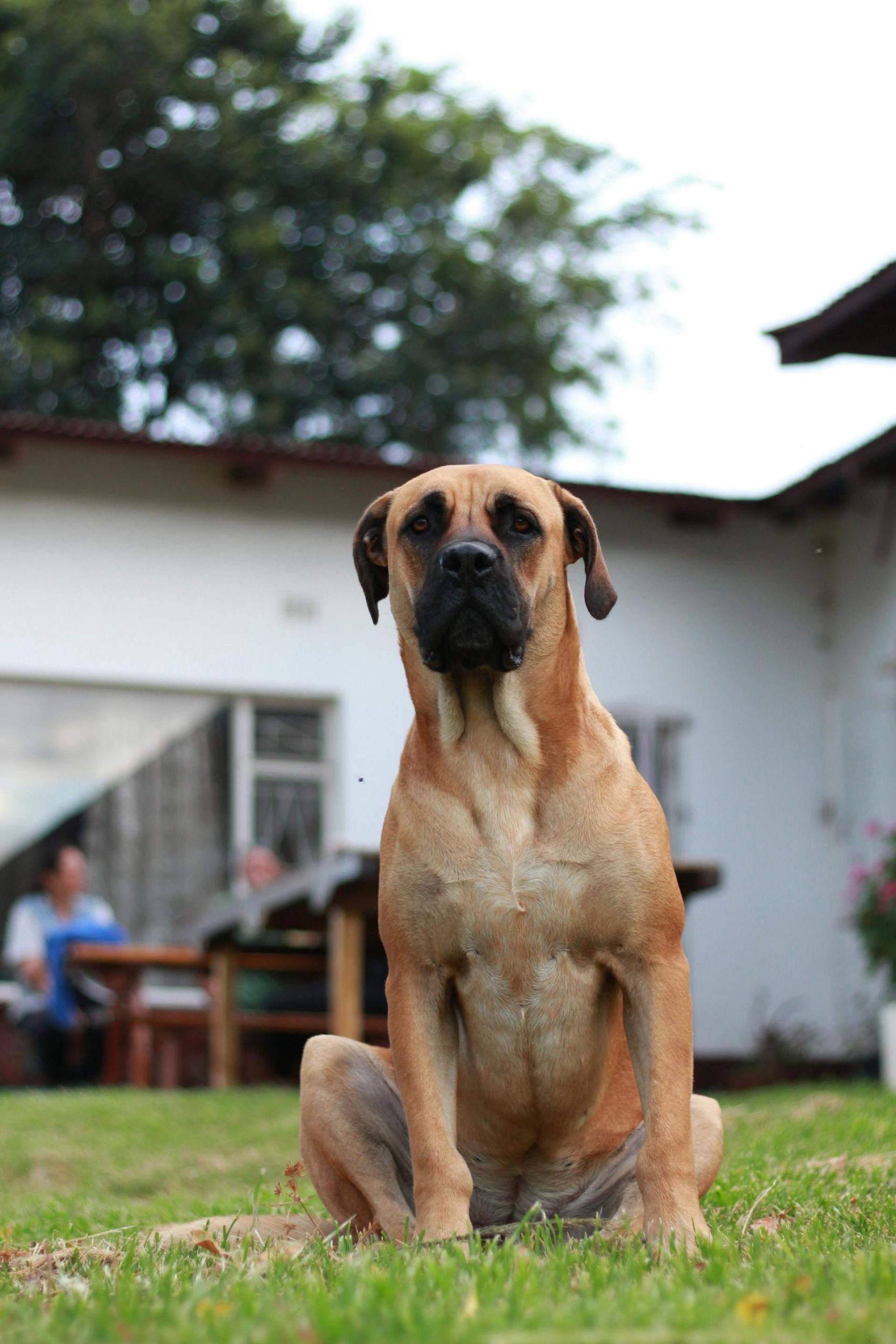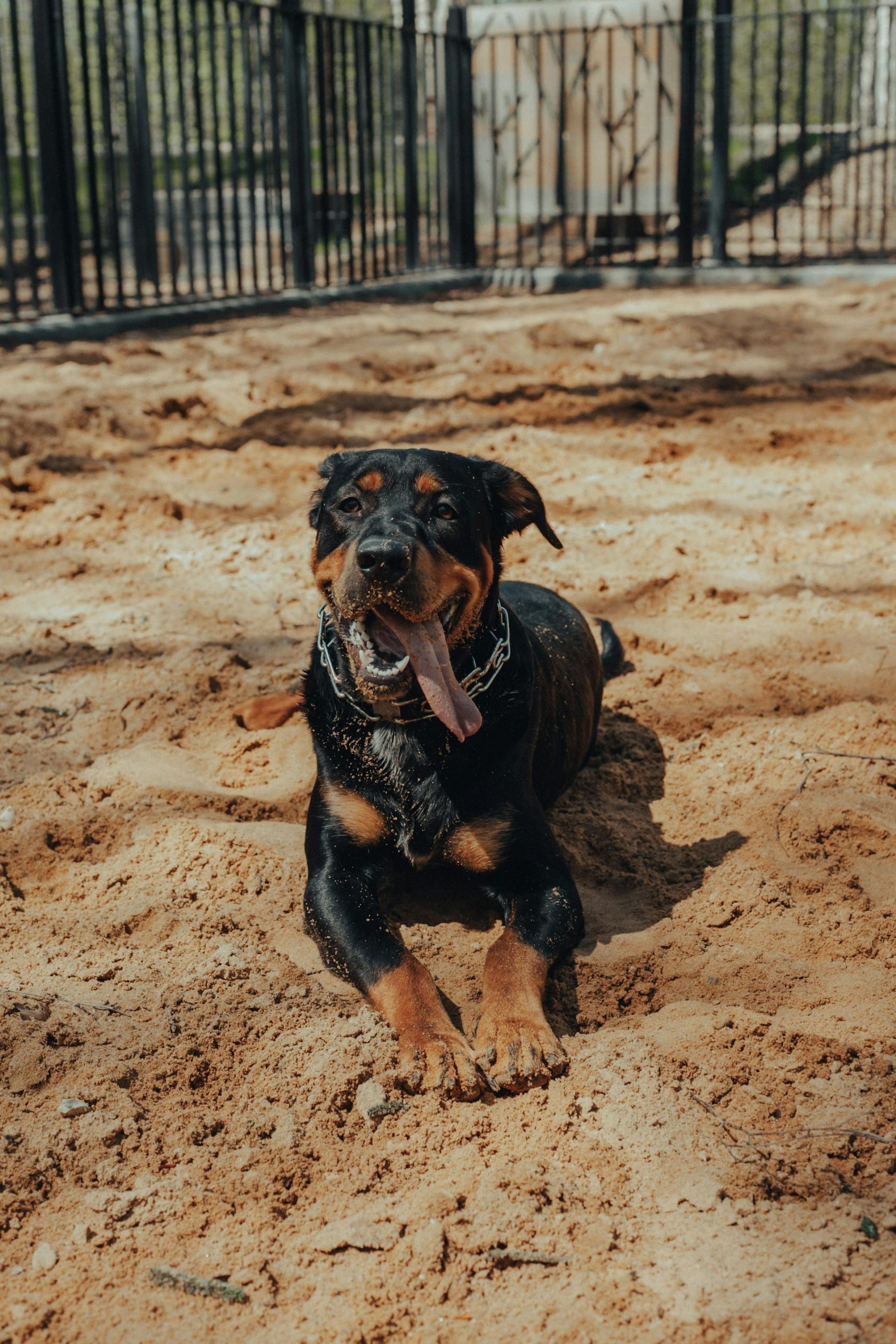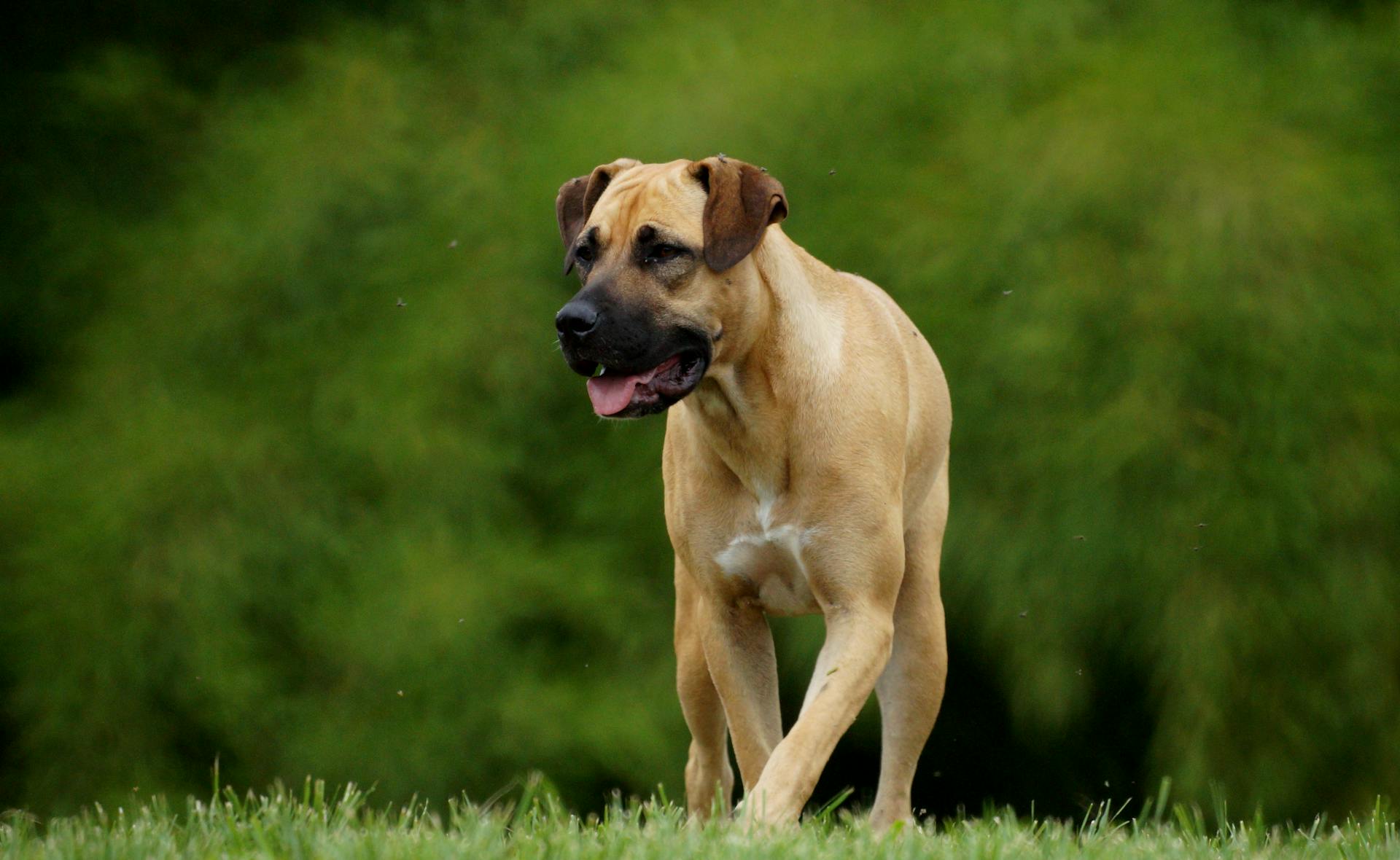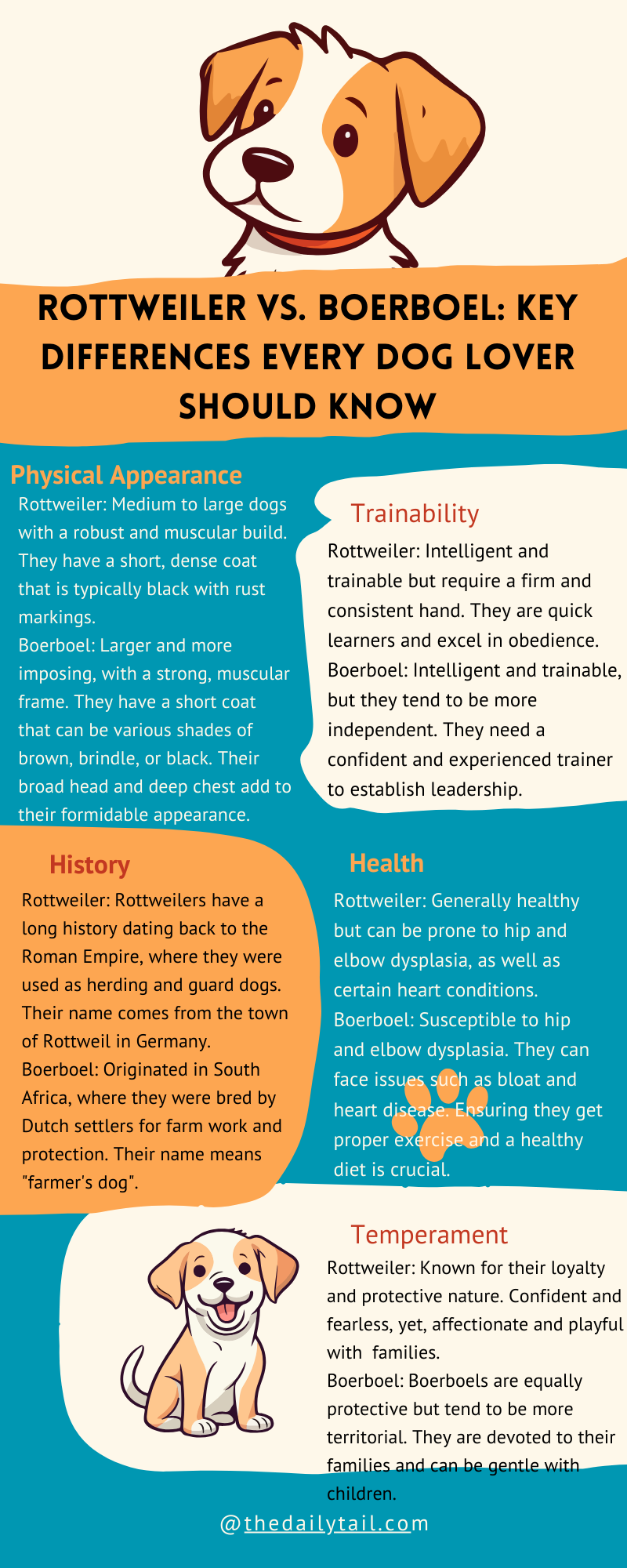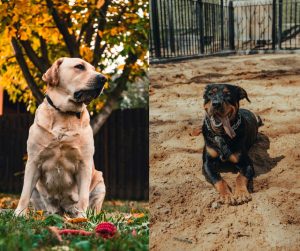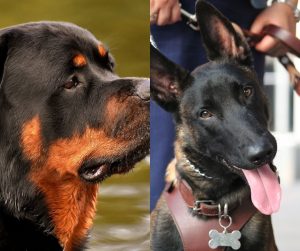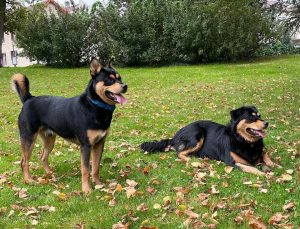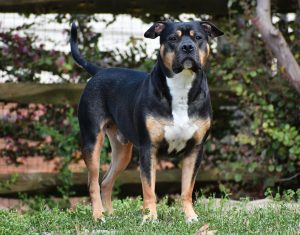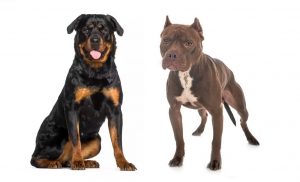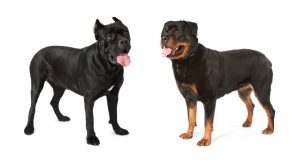Deciding between a Rottweiler vs Boerboel for your family’s new puppy is a significant choice. Each dog breed has its strengths and loving qualities that make them wonderful companions.
On one hand, we have Rottweilers, loyal dogs who sport a signature black and tan coat. They can grow anywhere from 80 to 140 pounds. These dogs are intelligent, protective and have been by our sides since the times of the Roman legions. Their strong-willed nature makes them not only impressive protectors but also sensitive to the needs of their family members.
Boerboels come from a completely different continent. They were originally bred in South Africa. They are even bigger with a weight that can tip the scales between 150 to 200 pounds. Available in a variety of coat colors, including brown, red, and brindle shades, these dogs have a commanding presence matched with a calm demeanor. Typically a robust breed with a slightly longer lifespan, signaling fewer trips to the vet and more time playing fetch in the backyard. Despite their intimidating size, they carry a gentle spirit.
As someone who has spent his life around dogs, I know choosing one is a challenging task. I’ve had everything from small dogs to purebred to mutts. And I can honestly say, the last decision to bring home my Jack Russell Terrier was the easiest one.
But that is due to 30+ years of experience around dogs. Same as with a partner in life. At this point, you already know what you want and who can give it to you.
Whether you prefer the steadfast Rottweiler or the mighty Boerboel, please provide a loving, active family environment. These dogs deserve a happy and harmonious life together with their dog owners. With that in mind, let’s talk more about the Rottweiler vs Boerboel dog breed comparison.
Key Takeaways
- Rottweilers and Boerboels are both strong, protective breeds that make great family pets
- They differ in size, with Boerboels being larger, but they share a need for human companionship and training
- Choosing the right breed for a family depends on understanding each breed’s unique characteristics and care requirements
Origins and History
The first thing we need to look at is the history of these popular dog breed. As I said before, they come from different continents. Yet, they have similar guard dog personality.
Rottweiler Roots
Rottweilers trace their history back to Germany, where they got their start pulling carts and driving cattle for butchers in the town of Rottweil.
With their strong work ethic, Rotties were the go-to dog for German cattle dealers. Their ancestry goes way back to the Roman Empire, where they were likely descended from drover dogs, a mastiff-like breed that traveled with Roman legions to herd livestock and guard outposts.
After World War II, they felt a bit neglected due to ties with Germany. Yet, their excellence and versatility shined brighter. Nowadays, Rottweilers can be used as service dogs, guard dogs, search and rescue dogs, military dogs, police dogs, and family pets.
Boerboel Background
Looking over to South Africa, we’ve got the Boerboel – a breed with a job to do. These dogs were bred by Dutch settlers in the 17th century, with one goal in mind: protecting farms from wild animals and intruders. The Boerboel is like the Swiss Army knife of dogs, versatile and strong, reflecting the rough, tough beginnings of the South African homesteads they safeguarded.
The name ‘Boerboel’ itself comes from Dutch/Afrikaaner words – ‘boer’, meaning ‘farmer’, and ‘boel’, which is a bit like saying ‘buddy’. So, think of the Boerboel as the farmer’s big, reliable friend.
Physical Characteristics
When you put a Rottweiler and a Boerboel side by side, you’ll see some clear differences. They’re both big and strong, but there’s more to each pup than just muscle and bulk. Let’s get to know what sets these breeds apart in their looks, from how much they tip the scales to the kind of coat they sport. Both are recognized by the American Kennel Club. These Rottweiler vs Boerboel physical traits are part of their breed standard.
Size and Weight
Rottweilers:
- Male: 95-135 lbs | Female: 80-100 lbs
- Height: Male: 24-27 inches | Female: 22-25 inches
Boerboels:
- Male: 150-200 lbs | Female: 120-160 lbs
- Height: Male: 24-27 inches | Female: 22-25 inches
Rottweilers are the smaller of the two breeds, but not by much when it comes to height. They’ve got plenty of muscle, making them no lightweights. Now, Boerboels, they’re the heavyweights here, often topping the scale way above the Rotties, which means they need a good amount of space to stretch those long legs. Both of these breeds have mastiff blood in them. It is no surprise they are often compared with dogs like Cane Corso, English Mastiff, and other large dogs.
Coat and Appearance
Rottweilers:
- Coat: Short, dense, and straight
- Color: Black with rust to mahogany markings
Boerboels:
- Coat: Short and sleek
- Color: Can vary — brown, red, brindle, and with a distinctive black mask
Both breeds have short, manageable coats. The Rottweiler rocks a black and tan look that’s pretty easy to spot. They have this sort of rugged charm, don’t they? Boerboels, on the other hand, show off more in the color department. They’ve got this blocky head that gives them a tough, sturdy look, matched with a black mask that’s like their signature style. The Boerboel’s overall appearance screams strength, much like their Rottweiler cousins.
Temperament and Personality
When picking a furry friend for the family, it’s super important to think about how they’ll fit in with your everyday life. Will they be a gentle giant or a tough cookie? Will they guard the house or be a snuggle buddy?
Protective Nature
Both Rottweilers and Boerboels are very protective of their families, and they have a strong need to keep their loved ones safe. Here’s the deal, though: Rottweilers show a quiet confidence and are always on the lookout, ready to step in if needed. Boerboels, they’re kind of like the tough-looking bouncers of the dog world; they’ve got an intimidating presence and are super loyal, but they’re not the type to pick a fight without a good reason.
Remember, these two are working dogs per se. So, they need a job to do.
Now, neither breed is downright aggressive without cause. They just need proper training to make sure their protective nature doesn’t get out of hand.
- Rottweiler: More of a reserved watchdog
- Boerboel: Looks scary, but is a softie at heart
Family Integration
Here’s where things get heartwarming. When it comes to being part of a family, these dogs are like that loyal friend everyone loves having around. Rottweilers can be affectionate and love to be involved in family activities. They’re big teddy bears with the kids but always keep one eye open, just in case. Boerboels are similar but take the loyalty up a notch. They want to be near their humans as much as possible, like a shadow on a sunny day. Both breeds need to learn how to be around other pets, but once they do, it’s like one big happy family.
- Rottweiler: Playful and protective, great for active families
- Boerboel: Overflows with love and loyalty, a true family guardian
Training and Socialization
When it comes to raising well-mannered puppies, starting off on the right foot with training and socialization really sets the tone. This early investment pays off big time, helping them become friendly and behaved adults.
Learning the Ropes
Boerboels and Rottweilers are smart cookies. However, their intelligence means they need to keep their minds busy learning new things, or else they might pick up bad habits. Training should be consistent; it’s like teaching a kid to brush their teeth—you’ve got to stick to a routine. Start with the basics: sit, stay, come. Reward them for a job well done because everyone loves a little treat for their hard work.
Rottweilers:
- Smart: They catch on quick
- Stubborn Streak: Might play hard to get with training; be patient
- Needs a Firm Guide: Show them you’re in charge, with kindness, of course
Boerboels:
- Eager to Please: They’ll work hard to get your praise
- Strong-Willed: Early training helps channel their energy
- Big Size: Teaching manners early means less trouble when they’re huge
Meeting New Friends
Socializing is not just about being polite at parties. For dogs, it’s about feeling calm around others and knowing there’s nothing to fear. Start early—introduce them to different people, dogs, sights, and sounds. It helps dogs be cool in new situations, meaning less worry for you when something unexpected pops up.
Rottweilers:
- Naturally Wary: Without socialization, they might not be the friendliest to strangers
- Family Love: They’ll love your pack but introduce new folks carefully
Boerboels:
- Protective Instincts: Early socializing helps them learn everyone isn’t a threat
- Social Butterflies: With time, they can be the dog everyone wants to pet
Keep sessions short and sweet. Like us, dogs can get tired, and nobody learns well when they’re pooped. Always end on a high note with a play session or cuddles, so they associate training and meeting new friends with having a good time.
Health and Exercise
Looking after a dog’s health and exercise is a big part of caring for our furry friends. They need the right food, plenty of play, and regular check-ups to stay happy and healthy. Let’s see what keeps these pups in tiptop shape and how to give them a helping paw with some common health problems.
Staying in Shape
Exercise Needs:
Rottweilers and Boerboels both have lots of energy and need a good amount of exercise to stay fit. Think daily walks, games, or a good run around a big backyard.
- Rottweilers: At least one long walk per day plus time to play
- Boerboels: A good amount of outdoor exercise, with space to roam
Grooming:
To keep their coat in good condition:
- Rottweilers: Brushing a few times a week; likes to stay clean
- Boerboels: Brushing once a week is usually fine; keep an eye out for dirt from all that exploring!
Preventing Health Issues
Hip and Elbow Dysplasia:
These big dog breeds can have a rough time with their hips and elbows. Regular vet visits are key for catching these things early. Plus, keeping them at a healthy weight can help.
- Regular check-ups can spot trouble before it gets too bad
- Proper nutrition and weight management help reduce the strain on joints
Health Concerns Like Bloat:
Scary stuff like bloat can happen, especially in large breeds. Here’s what they can do:
-
- Watch out for signs like a swollen belly or discomfort
- Small, frequent meals and no heavy exercise right after eating can help prevent it
Living With Your Dog
When choosing a dog, the space you have available and your ability to take care of your dog daily are super important.
Both the Rottweiler and the Boerboel do well as family pets with a dose of loyalty, but they have different needs when it comes to their home and how much you’ll be dealing with fur on your couch.
Space and Accommodation
Rottweilers can adapt to living in an apartment, provided they get plenty of exercise and love. They’re a bit like that friend who’s cool with a cozy movie night in a small living room.
Boerboels, on the other hand, thrive when they have a lot of room. Think of them as that buddy who always chooses the big park for gatherings. A Boerboel needs a spacious yard to wander and play.
-
-
- Rottweiler: Adapts to apartments; needs exercise
- Boerboel: Requires a yard; loves space to roam
-
Daily Life and Grooming
Let’s talk shedding and grooming.
Rottweilers are the low-maintenance friends in terms of grooming; a brush a few times a week will keep their coat looking nice.
Boerboels, though, they’re the same — not too fussy.
-
-
- Shedding and Grooming:
- Rottweiler: Moderate shedding; brush a few times a week
- Boerboel: Similar shedding; regular brushing helps
- Shedding and Grooming:
-
Grooming them is more than just keeping your house clean; it’s a way to bond with your dog. Like a family member who enjoys a good spa day, your dog loves the attention, and it makes them feel part of the pack. Regular grooming is a must for both breeds, so grab that brush and make it a fun routine!
Choosing the Right Dog for You
When thinking about adding a furry friend to your family, people tend to consider how a dog will fit into their day-to-day lives and the costs that come with a new pet.
It’s all about finding a balance between love for a breed and being practical about their needs and your own.
Breed Considerations
Choosing between a Rottweiler and a Boerboel comes down to understanding what these breeds are all about.
Rottweilers are known to be strong, loyal, and protective with an energy level that requires regular exercise.
On the other hand, Boerboels are massive protectors of the family, likely to be calm but always alert. They, too, need their daily walks and playtime.
When picking a breed, folks should ponder over the dog’s traits and how they mesh with their lifestyle.
If one lives in a smaller space, maybe a Rottweiler’s somewhat smaller size would be a better fit compared to the heftier Boerboel. For families with kids, it’s key to consider if the breed has a patient and gentle nature. Remember, no matter the breed, proper training and a loving home are what make a great family dog.
Costs and Commitment
Let’s talk money and time, because this furry investment involves both.
The price tag isn’t just for taking a pup home from the breeder—it’s the start of a commitment.
If one plans for a Rottweiler or a Boerboel, they should prepare their wallet for the cost of food, vet visits, training, and other essentials.
| Rottweiler | Boerboel |
|---|---|
| Price | $1,500 – $2,500 |
| Food | Expect around $50/month |
| Vet Bills | Routine care plus breed-specific needs |
Ownership means investment, not just in dollars but in time and energy—training, vet trips, and just generally being there for them.
They’ll need exercise every day, and that’s more than tossing a ball in the yard.
Last, but not least, you should always consider long-term commitment, because these pups are part of the family for a good 8 to 12 years.

